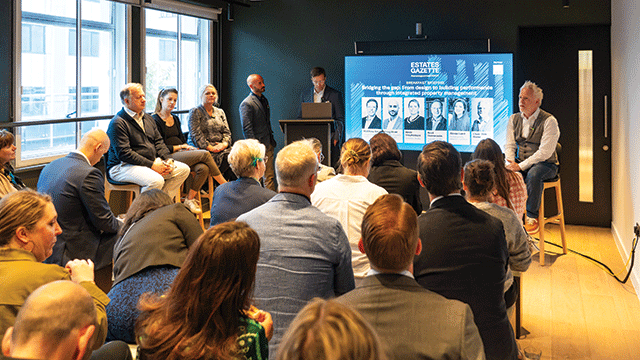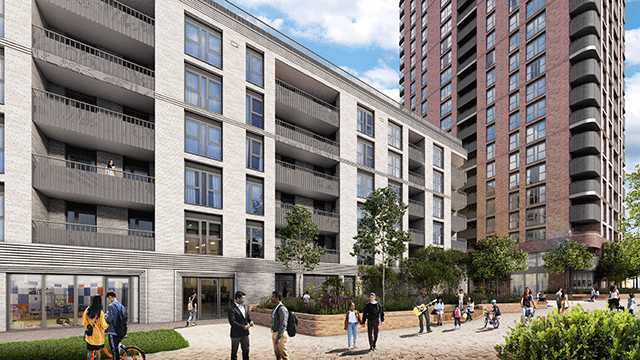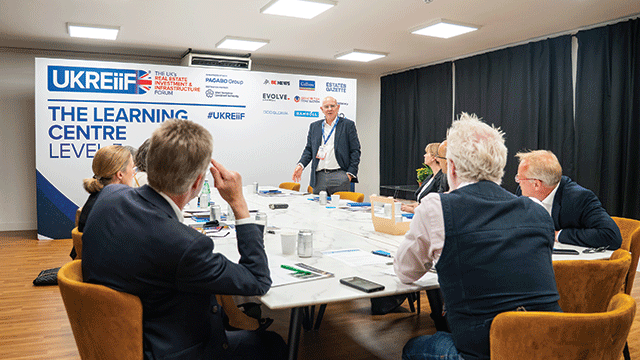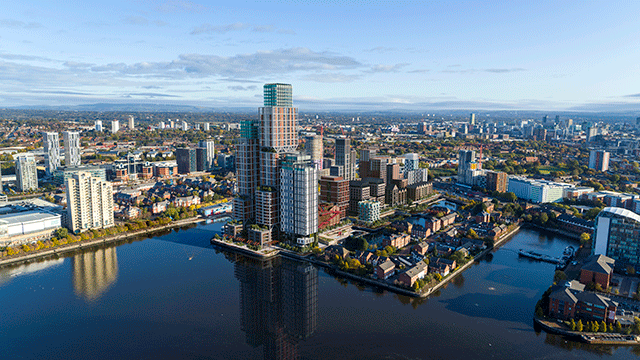James Stirling’s iconic City building at 1 Poultry, EC2, has been an insurance headquarters for 32 years. But soon, the Grade II listed offices overlooking Bank Station will be populated with the yoga-practising entrepreneurs, freelancers and small businesses attracted by co-working giant WeWork.
The axis around Poultry has become a symbol of the hoped-for transformation of the City from a financial and professional services centre to a more diverse occupier mix with the advent of Soho House’s The Ned hotel and Bloomberg’s new HQ at 3 Queen Victoria Street, EC4.
“There’s a wave of change coming faster than anyone expected,” says David Ainsworth, chief executive of CORE and vice president of the City Property Association.
“The big take-up by WeWork, in particular, but also by the other serviced co-working spaces. It has moved a lot faster than everybody expected, partly thanks to the capitalisation of WeWork, which has created a momentum that nobody really saw coming.”

However, the CPA and City of London Corporation are not resting on their laurels. At MIPIM in March, they launched Tech X The City, a report that set out the priorities for the Square Mile to attract the next wave of tech occupiers.
Christopher Hayward, chairman of the City’s planning and transportation committee, says the report has already had a tangible impact.
Challenger bank Starling Bank’s decision to take 14,500 sq ft at British Land and GIC’s 2 Finsbury Avenue, EC2, and the establishment of Innovate Finance, a new trade body dedicated to promoting the fintech sector, in the same building were a direct response to it, says Hayward.
“An awful lot of banks have actually gone to Canary Wharf, so that has happened as a natural evolution,” he says.
“Of course there are still financial services firms and we want them as part of the rich diverse mix, but it’s about having that healthy balance.”
Some 98.7% of City firms are SMEs with fewer than 250 employees, according to ONS data.
The next planning intervention by the corporation will be to promote more affordable workspaces through the local plan.
City transformation in numbers
24 – applications submitted to the City of London Corporation to create new roof terraces in 2016
98.7% – proportion of City firms which are SMEs (with fewer than 250 employees)
35 – number of hotels in the City, with a further 14 under construction
50,000 – number of new workers expected to arrive after the opening of Crossrail
“It’s about having flexible space that is affordable,” Hayward says. “Small businesses don’t want huge floorplates and they want it to be affordable.”
That priority was demonstrated by the consent secured by Shiva Hotels last month for a 191-bedroom hotel at Morley House, EC1, with the provision of two floors of affordable flexible workspace at neighbouring City Temple church.
Ensuring developers commit to improving public realm and retail and leisure around new developments has also been high on the agenda, with examples including the Bloomberg Arcade of 10 independent restaurants and a new landscaped public garden outside Pembroke Real Estate’s 4 Cannon Street, EC4.
Developers are also having to react quickly to the change in occupier demand and high levels of service provision offered by co-working providers. The corporation receives monthly applications for add-on roof terraces, but many developers recognise the need to go further.
Mark Swetman, founding director of LS Estates, says he originally envisioned the recently completed 26,000 sq ft office redevelopment with York Capital at 30 Moorgate, EC2, for financial services occupiers.
However, the building’s proximity to the new Crossrail Station at Liverpool Street West (due to open in December 2018) has opened up the tenant audience to the West End crowd and further afield. It will be just 6-8 minutes from Bond Street, W1.
“Clearly we are not fintech and mediatech-orientated but we are looking at the second and third generation of those tenants to basically fish them out of what were their core locations to what is a more mature location,” he says.
Amenities included in the building that are designed to appeal to a broader occupier base include shower and locker facilities, balconies and a large reception area.
Flexible workspace provider Workspace Group made its first City acquisition in June, buying Salisbury House, EC2, from Lone Star for £159m. The 240,000 sq ft office building is now filled with a mixture of businesses, including high tech, financial services and legal firms.
“The City market is not what it used to be,” says Angus Boag, development director at Workspace.
“I think quite a few years ago it used to be very much focused around financial services. But I think there are all sorts of things that are changing.
“It is moving towards becoming maybe not 24 hours a day, but much more of an 18-hour-a-day as opposed to a 12-hour-a-day environment.
“It wasn’t that long ago that pubs in the City didn’t open on a Saturday and they used to close at 7.30pm, so things have changed dramatically, but there’s obviously still further to go.”
What’s new in the City?
- Aermont Capital and General Projects’ refurbishment of 1 Poultry, EC2, is due to complete in December and has been let to WeWork.
- Bloomberg’s £1bn European HQ opened last month. The Foster + Partners-designed building at 3 Queen Victoria Street, EC4, will accommodate its 4,000 London-based employees.
- Soho House and Sydell Group’s The Ned, which opened in the summer, is a £200m hotel and members’ club in the former Midland Bank at 27 Poultry.
- Culture Mile: A City of London Corporation, Barbican, Guildhall School of Music & Drama, London Symphony Orchestra and Museum of London initiative to create a major destination for culture and creativity in the Square Mile. Three major developments are associated with the project: the new Museum of London at West Smithfield; the proposed Centre for Music and the transformation of Beech Street.
But has the public’s perception of the City really changed? Aakash Anuj, 26, a senior software engineer at Facebook, says he would prefer not to work in the City. “We are far too non-‘banky’ to be in Bank,” he says.
There is still more work to be done, with the City fending off rival campaigns from Paris, Frankfurt and Berlin to lure new businesses. “There is no sense of complacency,” says Ainsworth. “Everyone is really thinking and working hard to make this a dynamic place.”
Some things are unlikely to change, and the City also recognises the power of its rich history as the original co-working hub through the 17th and 18th-century merchants’ coffee houses. Institutions such as Rothschild at New Court, EC4, which has been redeveloped four times since the bank’s founder acquired the lease in 1809 for £750, are not expected to leave any time soon.
However, the City understands it needs to continue to evolve to maintain its status as a global economic power-house. As Rothschild famously said: “It requires a great deal of boldness and a great deal of caution to make a great fortune; and when you have got it, it requires 10 times as much wit to keep it.”
Tech X The City
Tech X The City, a report commissioned by the City of London Corporation and the City Property Association, sets out priorities for the evolution of the Square Mile:
- Encouraging co-working, alfresco or at street level, by bringing more life to underused outdoor space, using lobbies as public meeting spaces and enhancing the retail offer with more independents, pop-up retail and street-food vendors.
- Creating flexible grow-on space – perhaps in a refurbishment that makes a statement and keeps costs down. The tech sector wants flexible lease terms, the ability to scale up or down and access to the building 24/7.
- Effective marketing of value-for-money space offered by City rents on par with Shoreditch and the South Bank – despite its perception as an expensive location.
- Continuing the move towards a 24/7 economy, encouraging leisure, retail and cultural uses and managing risks from terrorism and hackers.
City threats
The impact of Brexit on the City is complex and evolving. However, a clear campaign point for the City of London Corporation is an immigration policy which ensures continued access to skilled EU workers.
Some 32% of the City’s workforce is non-UK and 12% is EU. The corporation is looking at the possibility of a devolved immigration policy which would see regions bid for skilled workers to meet business plans.
Banks have warned government that they need clarity over an EU transition agreement by the end of the year or they will need to make decisions about moving staff elsewhere.
Goldman Sachs chief executive Lloyd Blankfein tweeted in October: “In London. GS still investing in our big new Euro headquarters here. Expecting/hoping to fill it up, but so much outside our control #Brexit.”
Speaking at the opening of the new Bloomberg HQ, founder Mike Bloomberg said: “I think London will be better off if it finds ways to work it out so that you can have free flow [of people] back and forth. In this day and age that’s what you have to have or else you can’t compete.”
To send feedback, e-mail Louisa.Clarence-Smith@egi.co.uk or tweet @LouisaClarence or @estatesgazette











